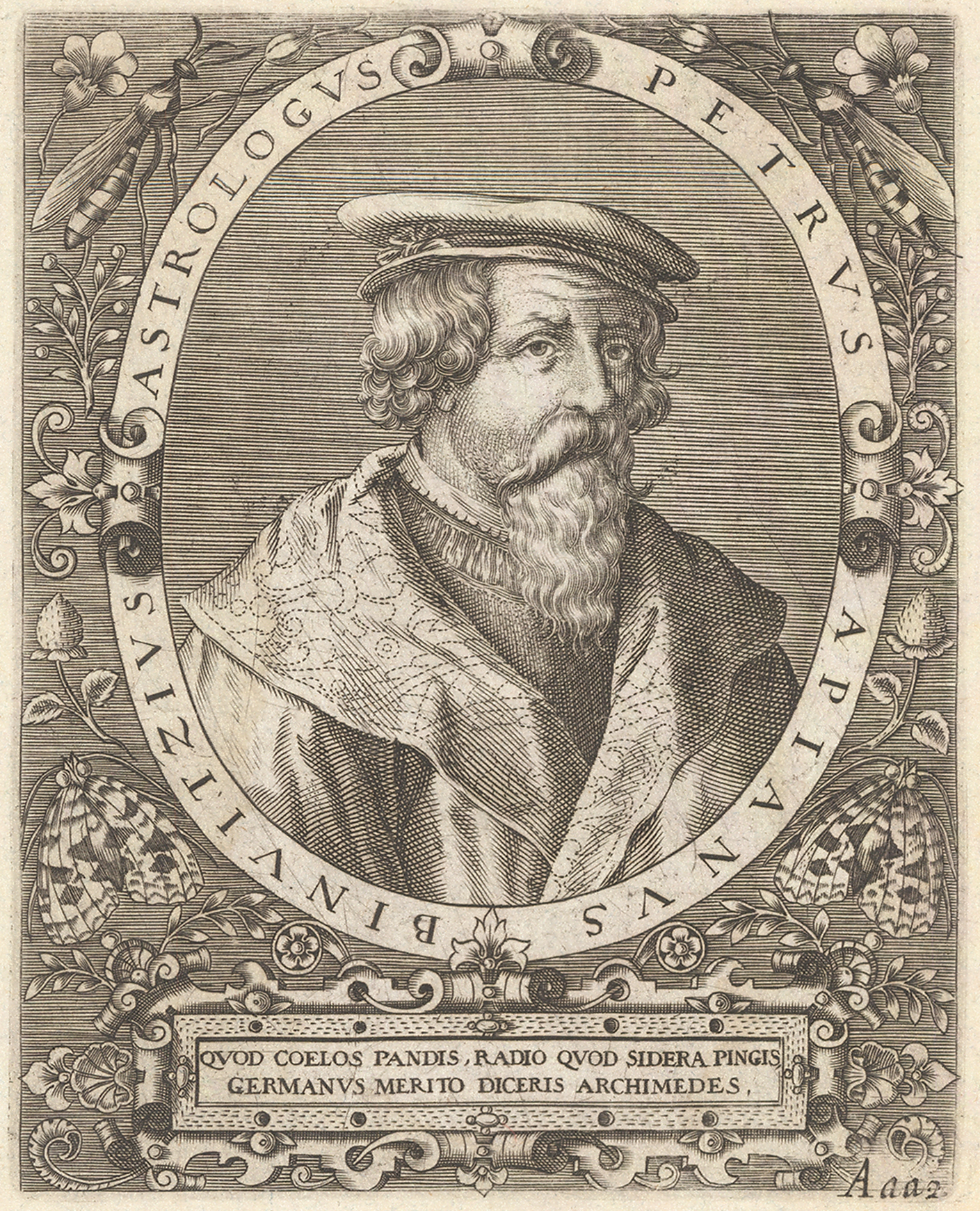Petrus Apianus
(1495 - 1552)

Born in Saxony as Peter Bienewitz, he studied at the University of Leipzig from 1516 to 1519, where he adopted the Latinised version of his German name, Petrus Apianus. In 1519, he moved to Vienna, where he was part of the second Vienna school of cartography, which included Georgius Tannstetter and Johannes Cuspinianus. He then moved again to Landshut, where he produced the Cosmographicus liber in 1524, an extremely popular work on astronomy and navigation which underwent thirty reprints. Based on Ptolemy, it contains paper instruments called volvelles, which Apianus would use so effectively in his work that they are sometimes known as Apian wheels.
In 1527, the University of Ingolstadt appointed him as a mathematics tutor and official printer. While at Ingolstadt Apianus came to the attention of Charles V, Holy Roman Emperor, who praised his work at the 1530 Imperial Diet and granted him printing monopolies in 1532 and 1534. He continued to publish on mathematical and astronomical themes, including the only known European depiction of Bedouin constellations in his 1533 book, Horoscopion Apiani Generale. In return, Apianus dedicated his most famous work to Charles in 1540: the Astronomicum Caesareum, a comprehensive review of contemporary astronomical knowledge, including theories from the use of solar eclipses to determine longitude to Apianus’s own observation that the tails of comets always point away from the sun. He had noted this trend after an appearance of Halley’s comet in 1531. It was beautifully illustrated and crammed with intricate volvelles, which could be used to calculate everything from eclipses to the hour of a baby’s conception. Apianus was supposedly promised the princely sum of 3000 guilders by the Emperor in return for his work, although there is no record of whether this was ever actually paid. He was, however, made a Reichsritter or Imperial Knight, and eventually made an Imperial Count Palatine.
Apianus continued to work in Ingolstadt until his death, teaching relatively little but producing work on sines, a variation on Pascal’s triangle and manuals for horological instruments
 地图
地图  地图集
地图集  珍本
珍本  版画
版画  天文仪器
天文仪器 






